You can turn leftover heavy cream into crème fraîche — here’s how
One simple ingredient is all you need.
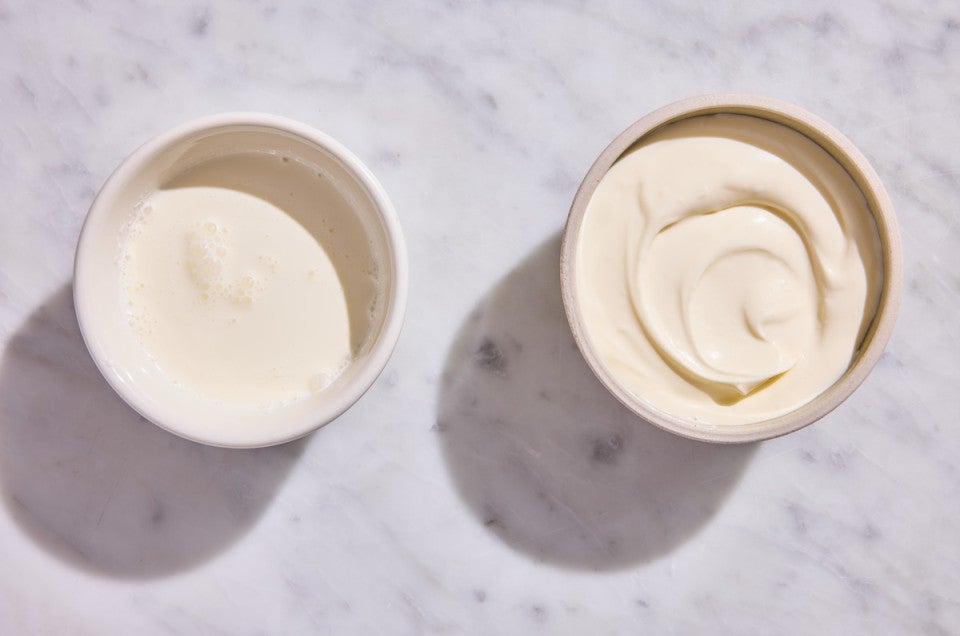

You bought a pint of heavy cream because you needed 1/4 cup for that irresistible Giant Hostess Cupcake Cake, and now you’ve got a nearly full carton of cream idling in the fridge. You don’t want to waste it; throwing away perfectly good food is both hard on your grocery budget and bad for the planet. So what can you do (besides rustling up the most indulgent bowl of cornflakes ever)?
Make crème fraîche.
Crème fraîche, something you’ll see listed on restaurant menus enriching a sauce or topping a dessert, is simply heavy cream combined with a culture of friendly bacteria (e.g., the lactobacilli found in yogurt) to turn it into a rich spread. It’s thicker than yogurt or sour cream but softer than cream cheese, and its flavor is a tasty mix of sweet cream and mild tang. While you can probably find crème fraîche in most grocery stores, it’s usually quite pricey. Thus, making your own from leftover cream is a definite win-win.
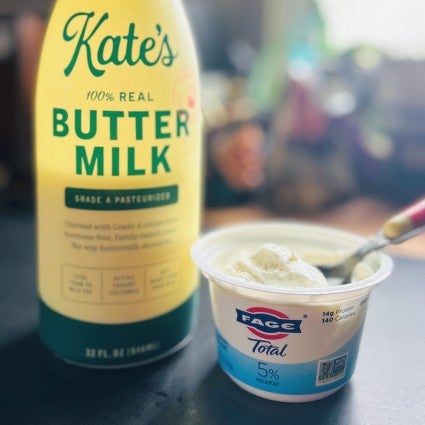
Turning heavy cream into crème fraîche requires just one additional ingredient: the friendly bacteria present in buttermilk, yogurt, or sour cream. Just the tiniest bit of any of these three dairy products will, in time and via fermentation, turn cream into crème.
All of these cultures work well, each one yielding a slightly different result. While there was no difference in time needed to thicken, our test results show that crème fraîche started with buttermilk is slightly tarter than that made with plain yogurt; and crème made with sour cream is tarter still.
If you’re looking for added richness rather than tangy flavor (and since it’s easier and less expensive to get a small container of plain yogurt than one of sour cream or buttermilk), plain unsweetened yogurt would be your culture of choice. For best results, choose whole-milk (not low-fat) unsweetened yogurt with live active cultures (L. acidophilus, S. thermophilus, L. bulgaricus, and the like).
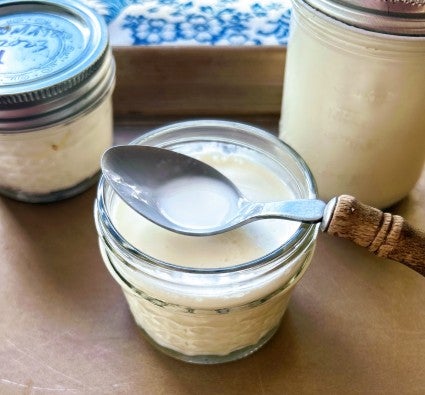
You’ll need just a small amount of culture to ferment your heavy cream: 1 tablespoon (14g) yogurt per 1 cup (227g) heavy cream will do it. Whisk the two together very well, making sure there are no lumps of undissolved yogurt drifting around at the bottom of the cup.
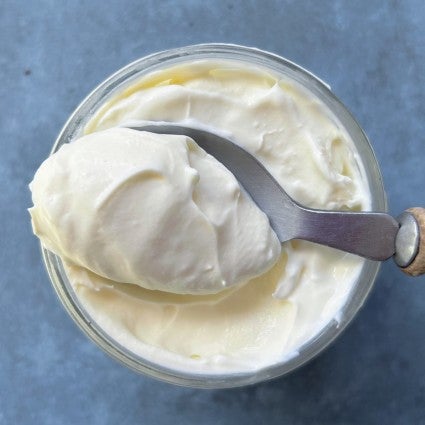
Pour the mixture into a glass jar, cap it securely, and set it somewhere warm-ish (about 75°F is good) for at least 12 hours, or for up to 36 hours, until the mixture is thick and spreadable. The cooler the resting place, the longer the process will take, but don’t be discouraged! You may think your soupy cream will never thicken — until suddenly it does.
Once the cream has become crème fraîche, store it in the refrigerator for up to several weeks. You’ll be able to tell if it’s passed its shelf life by giving it an investigative sniff, just as you would fresh cream. Crème fraîche should have a mild, pleasantly tangy smell; if it has a decidedly off, overly sour smell, it's time to throw it away.
Many directions for making crème fraîche say to look for heavy cream that’s not ultra-pasteurized. This can be hard to find, and also very expensive. But don’t worry; our test results didn’t show any difference between using ultra-pasteurized or “regular” heavy cream.
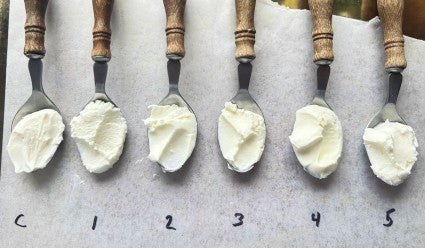
It’s simple: The ratio is 1 part culture to 16 parts heavy cream, by either weight or volume. Since it’s easiest to weigh, use 14g culture for every 227g of cream.
Potentially, but there’s a downside: The more culture you use (up to 3 tablespoons per cup of cream), the tangier your resulting crème will taste: more sour cream-y than just plain creamy. “Rushed” crème fraîche may also lose its beautiful smooth texture and become a bit grainy. In addition, simply increasing the amount of culture may not hurry the process at all, since there are other factors involved (temperature, type of culture). So unless you’re having a crème fraîche emergency, it’s best to let it take its own sweet time.
Yes! While we can’t guarantee it’ll work in every recipe, we’ve found that substituting crème fraîche for cream cheese in recipes where it’s not the main ingredient (and wouldn’t play a major role in structure) works well. For instance, while we wouldn’t use crème fraîche in a cheesecake recipe, it works well in these Herbed Cream Cheese Biscuits.
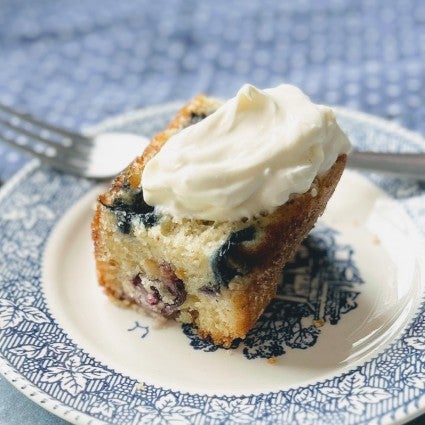
And of course, crème fraîche is also a wonderful topping, its tangy flavor a lovely complement to sweet desserts like Flourless Chocolate Cake and Old Fashioned Pecan Pie. Or spread it on scones, where it's a flavorful stand-in for traditional British clotted cream.
Cover photo by Patrick Marinello; food styling by Lydia Fournier.


